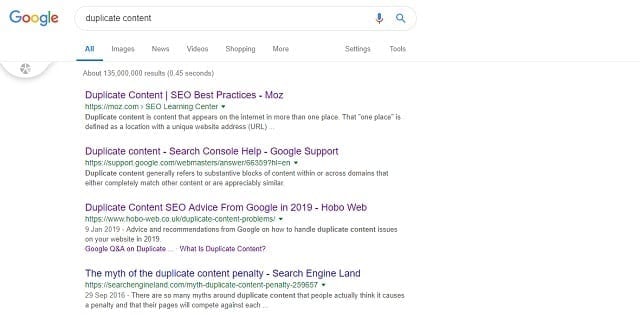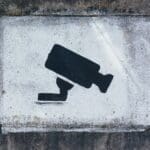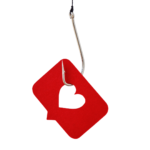How Different Forms of Duplicate Content Can Harm SEO

Not all duplicate content can be damaging to your SEO but it should be avoided.
When it comes to how search engines crawl sites to enable them to provide better quality search results, duplicate content is found to negatively impact on SEO but is all duplicate content bad for your website?
In this feature, we take a look at the various forms of duplicate content and consider how these can have an adverse impact on your SEO.
What is Duplicate Content?
According to Google itself, duplicate content is defined as being:
substantive blocks of content within or across domains that either completely match other content or are appreciably similar.
There are two types of duplicate content; malicious and non-malicious.
Malicious Duplicate Content
Often called copied content, or plagiarism, content that is duplicated maliciously is often done so in an effort to gain more traffic and manipulate search results.
Sometimes this can be where websites have simply ‘lifted’ entire sections of content from their competitor’s web pages in an attempt to hijack traffic.
This can also be done via ‘scraping’ tools and often results in your domain losing credit for having originated a piece of content.

Duplicate content that is ‘malicious’ is considered black hat marketing.
Non-Malicious Duplicate Content (Internal and External)
By contrast, some content that is found on a site can be duplicated for reasons that are not dishonest and can occur as a result of simple technical oversights.
External duplicate content
Syndicated content, press releases and republishing posts can all mean that a piece of content is duplicated across multiple domains and even within the same website itself.
Internal duplicate content
When it comes to eCommerce, the situation can get even more complicated with the same product description being used across the website, e.g. within different categories. eCommerce website can have the same issue with external duplicate content, due to product descriptions being shared with external websites, e.g. manufacture descriptions, sites using drop shipping, etc. Similarly, internal duplicate can occur due to common blocks within the website design (header, footer, menu, etc), which are perfectly acceptable when implemented sensibly. However the issue can become more significant depending on the amount of content within those blocks and use of other features which can duplicate content, such as blog feeds.
Likewise, there are plenty of ways in which content can be created just once but end up with several URLs meaning multiple versions of the same page in the eyes of a search engine. The causes here are largely technical. For example, this can happen as a result of comment pagination, having printer friendly versions of a page and even the use of session IDs within a browser. Duplicate content can even occur when a site has two separate versions of the same domain such as www vs non-www, http vs https. This is known as the canonical URL problem.
So, How Does Duplicate Content Harm SEO?
Ultimately, there are no official sanctions taken by search engines against sites that have duplicate content. Plagiarism, however, can result in the original authors filing legal claims against you.
When it comes to SEO, companies like Google reiterate that SERP performance is driven by rewarding those websites where content is unique and has an added value. Basically, duplicate content does not negatively harm your SEO per se but it serves absolutely no purpose when it comes to improving your SEO either.
At worst, where content is found to be duplicated on your website then search engines may simply ‘stack’ your URL in favour of a site with a higher domain authority or with other better ranking factors.
Remember, the purpose of a search engine is to return the best set of individual results and will rarely return multiple versions of exactly the same content.

Duplicate content might not get you officially penalised but can harm your SERP performance.
Fixing Duplicate Content Issues
In order to avoid any negative impact from duplicate content on your site, it is imperative that you first ensure that all new content is unique and not copied from other websites.
Secondly, your content should always offer something extra that other sites do not already offer.
Not only does this help to boost your SEO but will likely me more useful to visitors to your site and help with conversion rates.
Duplicate content tools
There are plenty of tools to help you ensure that this is done including Copyscape and Plagiarisma, both of which help to identify external duplicate content.
Useful tools for internal internal duplicate are Siteliner and Screaming Frog’s SEO Spider – both of these tools are incredibly useful for identifying a whole host of other content and technical SEO related issues, including broken links, thin content (pages which insignificant word counts), missing image ALT tags, and much more.
SEO audits
Lastly, a technical audit of your website and SEO should help you identify where content is being duplicated unwittingly or where some restructuring might be necessary to help identify which version of the content is the original. If the same content needs to appear in several locations then simply using canonicalisation or implementing a 301 redirect can help search engines index the right URLs.
Using meta robots with ‘noindex, follow’ can also help identify those pages to a search engine which have duplicate content that should not be indexed. It is important to allow them to crawl the pages with the ‘follow’ code but restricts them from including them in search results.
Where you have different versions of the same domain (e.g. www.opace.agency and opace.agency), you should use the Google Search Console to set your preferred parameter handling and domain.
To protect against scraping, using a canonical attribute pointing to its own URL should help.
Finally, where content is syndicated you should ensure that those websites that are republishing your content include the correct backlinks and attributions.
Opace and SEO
Opace is an SEO agency who specialises in supporting customers in the design and delivery of a fully integrated SEO strategy and SEO-compliant websites. We understand the need for unique and engaging content that delivers value extra in order to boost SEO performance.
To find out more about our digital strategy, content, design and marketing services, call us today on 0121 222 5757.
Image Credits: Solomon203/Wikimedia & OpenClipArtVectors(Pixabay), Petr Sejba, Google and Ryan Minkoff.
« Back to Glossary Index



